Media | Articles
Chevy’s eighth-gen Corvette Z06 is poised to topple these 3 production-car V-8 records
Last month, Chevrolet finally acknowledged that the first high-performance variant of its hugely popular eighth-generation Corvette is on the way, with a reveal date set for this fall. The tantalizing video clip focuses on the wondrous symphony emanating from the exhaust as an unseen Z06 prototype blitzes a closed track and public pavement. The announcement was expected by the Chevy faithful, but the tidings are no less exciting.
The hype surrounding the engine in the eighth-gen Z06 is well-deserved. The V-8 housed behind the passenger compartment of this brute will stem from the 5.5-liter (336-cubic-inch) flat-plane-crank unit of the C8.R race car, an engine that did more than prove itself in its inaugural season. The mill earned Chevrolet seven wins in its first 13 starts, and when the dust settled on the 2020 IMSA GLTM championship, Corvette Racing had swept the manufacturers, drivers, and team titles.

Balance of performance regulations have limited the race version of the powerplant to 500 horses, but the mill in the street-going Z06—which GM will likely dub LT6—should make at least 100 additional ponies from the same 5.5 liters, while utilizing a nearly identical crankshaft design. The LT6 also heralds the return of dual overhead cams to the heart of America’s sports car. Not since the last C4 ZR-1 rolled off assembly lines in 1995 has a Vette engine sported a similar engine architecture.
Based on what we know so far, the LT6 will rewrite the record books for naturally aspirated V-8s when it finally breaks cover this fall. Here are three production-car V-8 records (and one speculative bonus) that the first mid-engine Z06 is poised to topple.
Largest-displacement flat-plane V-8

Current record holder: 2015–20 Ford Shelby GT350, “Voodoo,” 5.2 liters
Marketplace
Buy and sell classics with confidence
The mid-mounted V-8 in the upcoming Z06 is all but guaranteed to displace 5.5 liters. That displacement doesn’t rewrite any Corvette records, but make no mistake: GM has set itself a truly impressive task by mass-producing an engine this big with a flat-plane-crank design. As opposed to their cross-plane brethren, flat-plane crankshafts rely less on bulky counterweights. This enables them to rev easier (faster and higher), but the configuration also generates excess vibration. The larger the displacement, the worse the vibration.
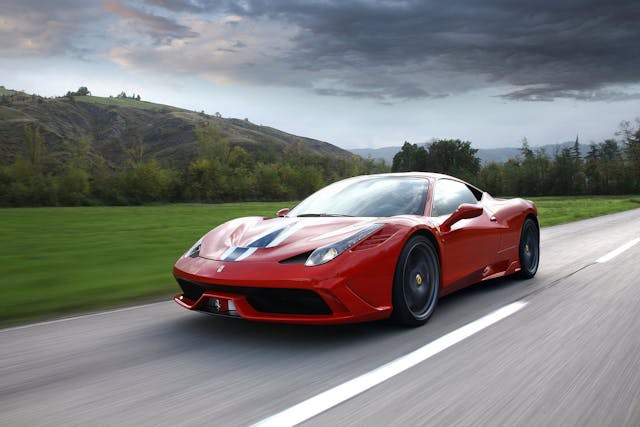
Unconvinced? Look to Ferrari. The world’s most renowned purveyor of flat-plane-crank V-8s has favored the design since 1973. In all that time, it dared not exceed 4.0 liters until 2005, when the F430’s 4.3-liter V-8 succeeded the 360 Modena’s 3.6-liter affair. After ’05, the Prancing Horse only grew its signature V-8 once, creating Ferrari’s largest-ever eight-cylinder in the process: the 2010–15 458 Italia’s 4.5-liter V-8. This Italian has joined the Z06 as a benchmarking companion nearly every time the Chevy has emerged for testing on public roads.
Other Voodoo records in the LT6’s crosshairs include:
Most torque from a naturally aspirated flat-plane V-8 (429 lb-ft): Generally speaking, torque parallels displacement. Even though the Voodoo is down 71 horses compared with Ferrari’s mightiest naturally aspirated flat-plane-crank V-8, its extra 0.7 liters provide it with 31 more lb-ft of twist. The C8.R weighs in with 480 lb-ft, and an unregulated 5.5 could easily sneak into the 500 range.
Highest redline in an American performance car (8250 rpm): Aside from its gloriously unique exhaust note, the GT350’s signature party trick was the way it never ran out of breath. The naturally aspirated Shelby was just approaching its redline some 1700 rotations per minute after its Camaro rivals hit their limiters. The 2023 Z06 is shooting even higher on the tach. Expect it to hit a 911 GT3-esque 9000 rpm before complaining.
World’s most powerful naturally aspirated V-8
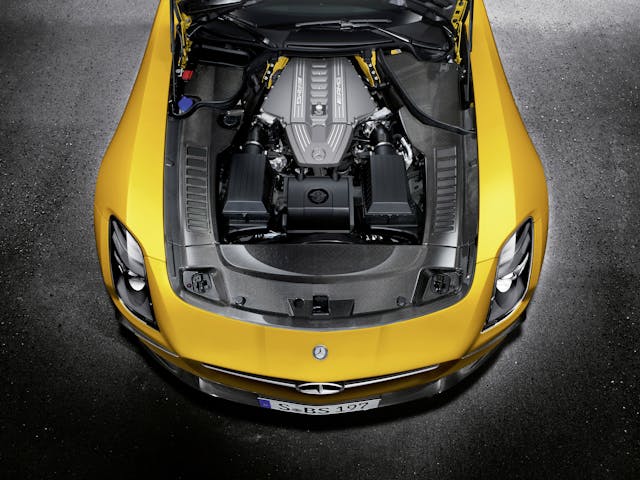
Current record holder: 2014 Mercedes-Benz SLS AMG Black Series, “M159,” 622 hp
All signs point to a final horsepower rating somewhere between 600 and 650 for the C8 Z06. The first mid-engine Z06 is unlikely to match the output of its supercharged, seventh-gen predecessor, but the naturally aspirated V-8 hp crown is definitely within reach.
Sitting comfortably in the middle of that speculative 600–650 range is the ultimate version of AMG’s first in-house V-8, the M159. The heart and soul of the one-year-only SLS AMG Black Series produced 622 horses. What other cars in this hp range might Corvette chief engineer Tadge Juechter have stuck to the bulletin board on day one of Z06 development? It’s a fun question. If you want to feel a bit of a time warp, consider this: Even if the LT6 doesn’t nudge out the M159 for overall output, the mid-engine Z06 could debut with more horses than the McLaren F1 did in 1992. Its BMW V-12 churned out 618 hp.
Most powerful naturally aspirated American engine
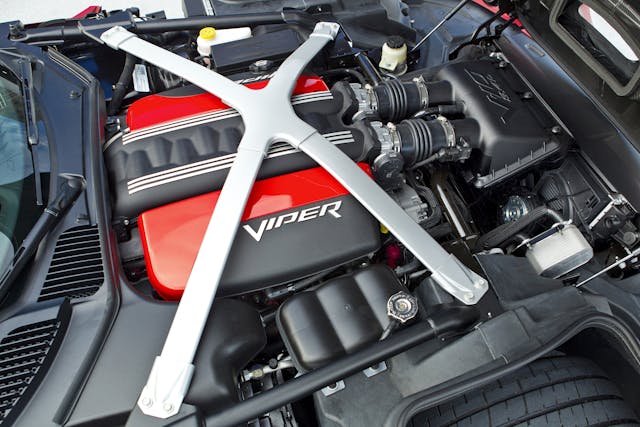
Current record holder: 2015–17 Dodge Viper, 8.4-liter V-10, 645 hp
Of the three records in this list, this is the least likely to fall to the LT6. (The fourth is essentially impossible, but provides a springboard for fun speculation.) To ascend to the throne of most powerful, free-breathing American mill, the 5.5-liter LT6 must outmuscle the final 8.4-liter Viper V-10.
When the Viper became a Dodge again for its final three years of production—after a two-year stint as a solo artist on the short-lived, standalone SRT label—it received a 5-horse bump to 645. This made the V-10 the most powerful naturally aspirated engine any of the Big Three had shoehorned into a production car. The 526-horse Voodoo is Ford’s best effort, and the 7.0-liter LS7, with 505 hp, is GM’s current champ.
With 819-hp monsters like the 812 Competizione dominating the worldwide leaderboard, the national championship of natural aspiration is the best the C8 Z06 can hope for. (The aforementioned Ferrari also has the advantage of four more cylinders and one full extra liter.) Even so, if the Corvette team can outgun the game-changing C6 ZR1 and extract more than 638 horsepower from a combination free of forced induction, it will have achieved something monumental.
Highest specific horsepower (hp per liter) from a naturally aspirated motor
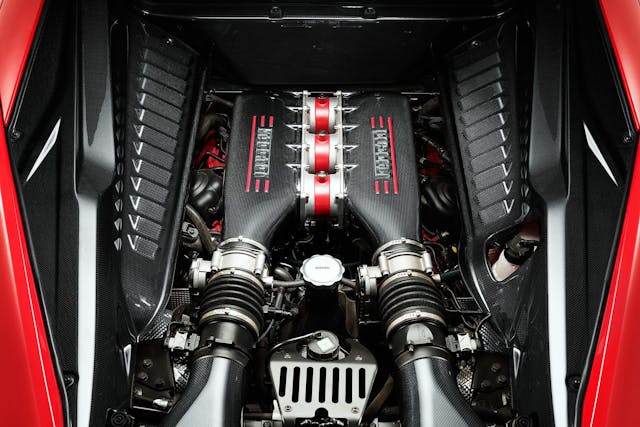
Current record holder: 2014–15 Ferrari 458 Speciale, 597 hp from 4.5 liters, 132.66 hp/liter
Before you get too excited, the C8 Z06 won’t be toppling this record. We mention it simply to highlight how impressive the Speciale is eight years after its debut. To match the specific-hp record of your author’s favorite Ferrari, the LT6 needs to register a 730 on the dyno, and the Chevy will likely fall about 100 horses short. Where will the Z06 end up on the specific horsepower scale? A horsepower figure that surfaces frequently in C8 Z06 “leaks” is 617, so let’s use that semi-conservative figure for some back-of-the-napkin comparisons.
Wringing 617 horses from 5.5 liters would score the C8 Z06 a specific-hp rating of 112.18. After the record-holding 458 Speciale’s 132.66 horses per liter comes another Ferrari, the 812 Competizione, whose 819-hp, 6.5-liter V-12 earns it a rating of 126 hp/liter. It is followed closely by the 992-gen 911 GT3 (125.75 hp per liter) and the “regular” Ferrari 458 (124.88). (The 458 took the specific-hp title from the Honda S2000, which produced 123.5 horses from each of its liters in its top spec.) Ferrari strikes again for fourth with the F430 (112.32 horses/liter). Assuming that the 617-hp estimate is on target (again, this number is unconfirmed), the C8 Z06 would slot just below the F430 and ahead of the 360, whose engine generates 109.72 horses for each liter.

Two supercharged Corvettes crash the party next. Both of their engines displace 6.2 liters: The C7 Z06 was able to milk its LT4 for 12 more horses than the C6 ZR1 made with its LS9, resulting in scores of 104.84 and 102.9 horses per liter, respectively. Three more of the naturally aspirated greats mentioned here achieved over 100 horsepower per liter. The legendary F1 is the first, with 101.64. Next up is the Shelby GT350 (101.15). Finally, we have the SLS AMG Black, whose AMG mill made 100.32 ponies per liter.
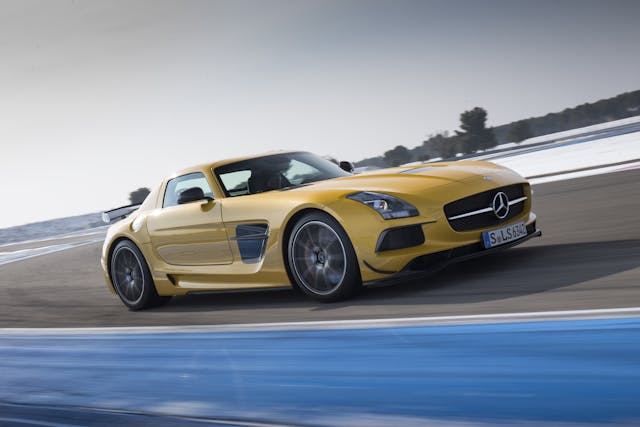
The less prestigious “Under 100 Club” starts with the base C8 Corvette—79.84 horses from each of its 6.2 liters. The two big-displacement monsters come last: The Viper, whose 8.4-liter V-10 earns a score of 76.79, and the 2006 Corvette’s 505-hp, 427-cubic-inch LS7 (72.14 hp/liter).
Needless to say, we are incredibly excited to see where the new Z06 winds up in the hallowed pages of naturally aspirated lore. Setting aside the fourth, how many of these three production-spec V-8 records will the LT6 claim? You tell us in the comments below.

















